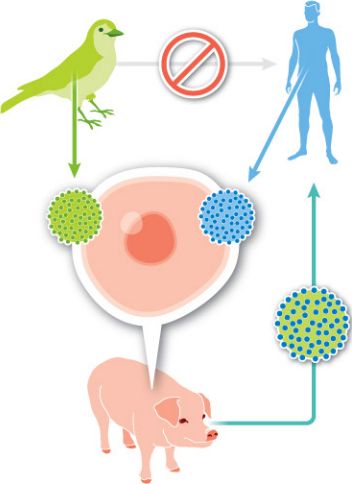 Genetic recombination in the flu
Genetic recombination in the flu
Bird flu viruses usually do not infect humans, but can do so via a pig intermediate host.
Some flu strains may originate in birds, then undergo genetic recombination in a pig before propagation among humans.
The Hong Kong flu of 1968, for example, arose from recombination between duck H3N8 and human H2N2.
The recombinant H3N2 was a new strain never experienced in human populations before.
 Evolution and diversity among the microbes
Evolution and diversity among the microbes 
 Evolution and diversity among the microbes
Evolution and diversity among the microbes 